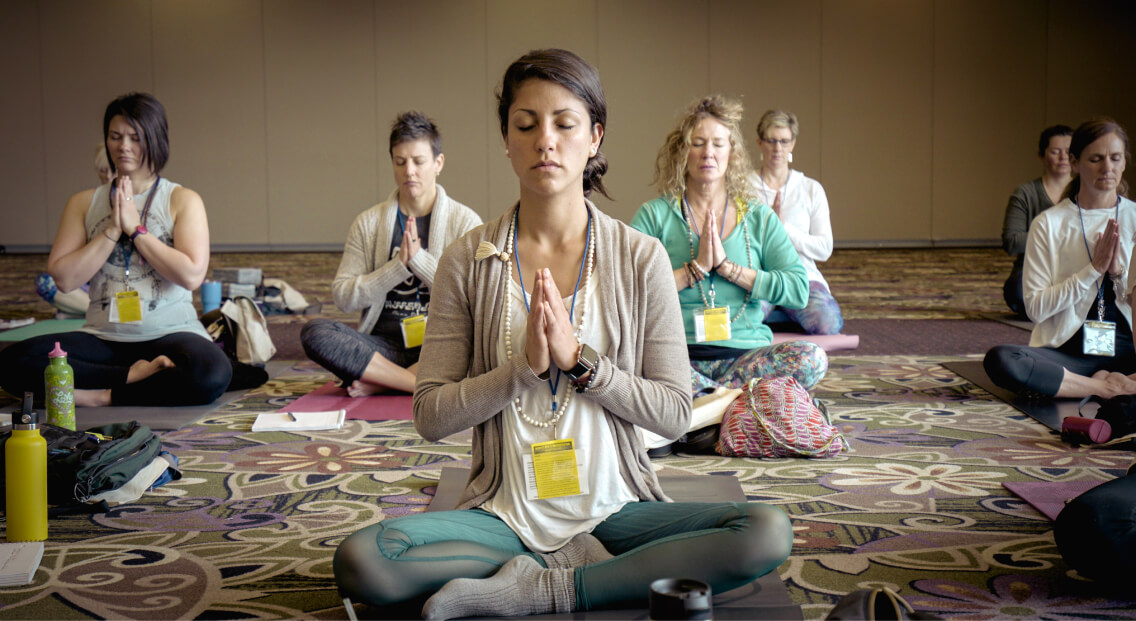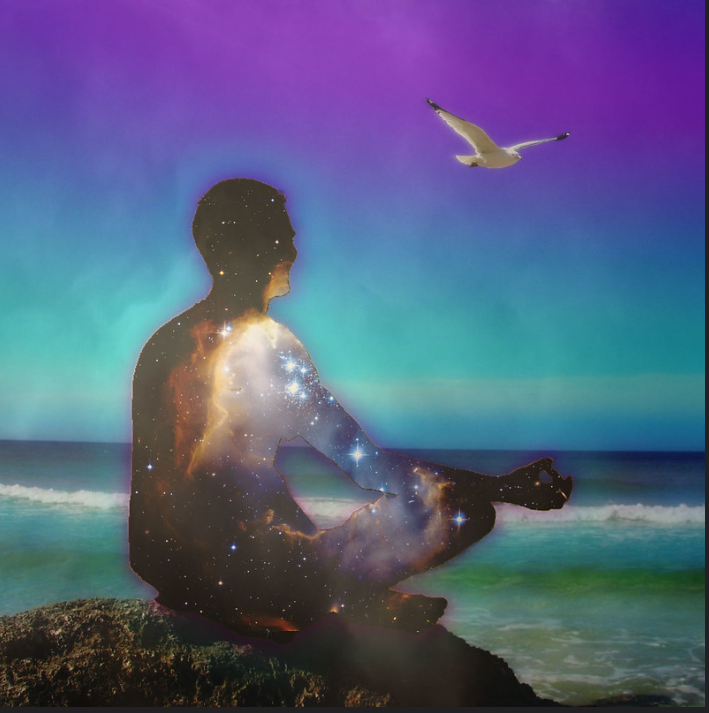You don’t necessarily need medication to control high blood pressure. High blood pressure can also be managed naturally, with practices like yoga. While medications may prevent blood pressure from rising further, they don’t contribute to overall long-term health. Yoga, on the other hand, promotes overall wellness and may reduce the need for medication. Let’s explore some yoga poses that can help in controlling high blood pressure naturally.
Balasana (Child’s Pose)
Balasana, also known as the Child’s Pose, is a foundational yoga asana that provides deep relaxation and is commonly practiced to rest and rejuvenate during yoga sessions. The name is derived from the Sanskrit words “bala,” meaning “child,” and “asana,” meaning “pose.” It involves kneeling on the floor, sitting back on the heels, and gently lowering the torso forward until the forehead rests on the mat, with arms stretched forward or placed alongside the body. This posture helps stretch the lower back, hips, thighs, and ankles, making it beneficial for relieving tension and improving flexibility in these areas. It also promotes a sense of calm and introspection, aiding in stress reduction and mental clarity. Balasana is suitable for practitioners of all levels, offering a safe way to reconnect with the breath and center the mind.

Sukhasana (Easy Pose) with Pranayama
Sukhasana, or Easy Pose, is a simple seated posture often used for meditation and pranayama (breathing exercises). The name comes from the Sanskrit words “sukha,” meaning “ease” or “comfort,” and “asana,” meaning “pose.” This posture involves sitting cross-legged with a straight spine, relaxed shoulders, and hands resting on the knees or in a mudra. Sukhasana encourages a sense of grounding and stability, making it an ideal position for focusing on the breath and calming the mind.

When combined with pranayama, or yogic breath control, Sukhasana becomes a powerful tool for balancing the body and mind. Practicing pranayama in this pose enhances lung capacity, regulates the flow of prana (life force energy), and reduces stress. Techniques such as Nadi Shodhana (alternate nostril breathing) or Anulom Vilom are often performed in Sukhasana, promoting relaxation, mental clarity, and inner peace. This combination is suitable for practitioners of all levels and helps cultivate mindfulness and a deep connection to one’s inner self.
Vajrasana (Thunderbolt Pose) with Breathing Exercises
Vajrasana, or Thunderbolt Pose, is a simple kneeling yoga posture often used for meditation and breathing exercises because it helps you feel stable and grounded. The name comes from the Sanskrit word “vajra,” meaning “thunderbolt” or “diamond,” and “asana,” meaning “pose.” In this pose, you sit on your heels with your knees close together, keep your back straight, and rest your hands on your thighs. It helps align the spine properly and encourages steady, focused breathing.
When combined with breathing exercises like Bhastrika (fast breathing), Kapalabhati (cleansing breath), or Anulom Vilom (alternate nostril breathing), Vajrasana becomes even more beneficial. It supports digestion, calms the mind, and helps with deep breathing. Unlike most yoga poses, Vajrasana can be done right after eating, as it improves blood flow to the stomach and aids digestion. It’s a great pose for relaxing the mind and finding inner peace while strengthening the body.

Setu Bandhasana (Bridge Pose)
Setu Bandhasana, or the Bridge Pose, is a rejuvenating backbend asana in yoga that strengthens and stretches the body while calming the mind. The name comes from the Sanskrit words “setu,” meaning “bridge,” “bandha,” meaning “lock,” and “asana,” meaning “pose.” To perform this pose, one lies on their back with knees bent, feet hip-width apart, and arms resting alongside the body. On an inhale, the hips are lifted toward the ceiling while pressing the feet and arms firmly into the ground, creating a bridge-like structure with the body.
This posture offers numerous physical and mental benefits. It strengthens the back, glutes, and hamstrings while opening the chest and shoulders. It also stretches the neck and spine, improving flexibility and posture. On a physiological level, Setu Bandhasana stimulates the thyroid and lungs, improves digestion, and enhances blood circulation. Mentally, it helps alleviate stress, anxiety, and fatigue, promoting a sense of calm and balance. Practicing this pose regularly can also energize the body and counteract the effects of prolonged sitting. It is an excellent asana for both beginners and advanced practitioners, with modifications available to suit individual needs.

Adho Mukha Svanasana (Downward-Facing Dog)
Adho Mukha Svanasana, or Downward-Facing Dog Pose, is one of the most well-known yoga postures, commonly practiced in many yoga routines. The name comes from the Sanskrit words “adho” (downward), “mukha” (face), “svana” (dog), and “asana” (pose). This pose resembles a stretching dog and is often included in sequences like Sun Salutations.
To perform this pose, start on your hands and knees, with hands shoulder-width apart and fingers spread wide. Tuck your toes under, lift your hips towards the ceiling, and straighten your legs as much as possible while keeping the spine long. The body forms an inverted “V” shape, with heels aiming toward the floor and the head relaxed between the arms.
Adho Mukha Svanasana offers many benefits. It stretches the entire back, shoulders, hamstrings, calves, and arches of the feet. It strengthens the arms, shoulders, and legs while also improving blood circulation to the brain, promoting clarity and focus. This pose helps relieve stress, fatigue, and mild back pain, making it a rejuvenating posture for both the mind and body. Suitable for all levels, it serves as a transitional or resting pose in many yoga practices.


